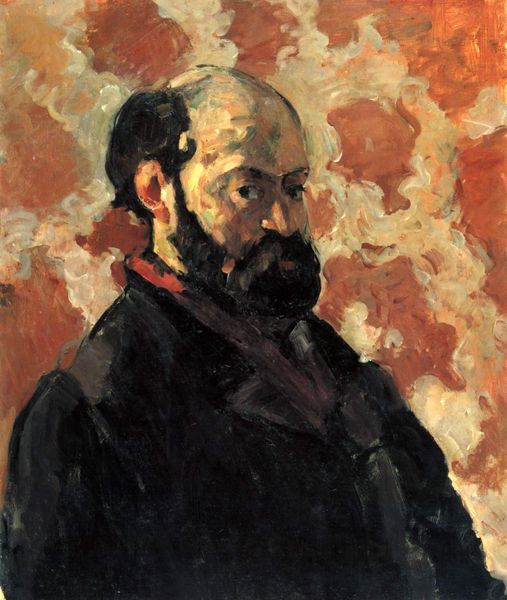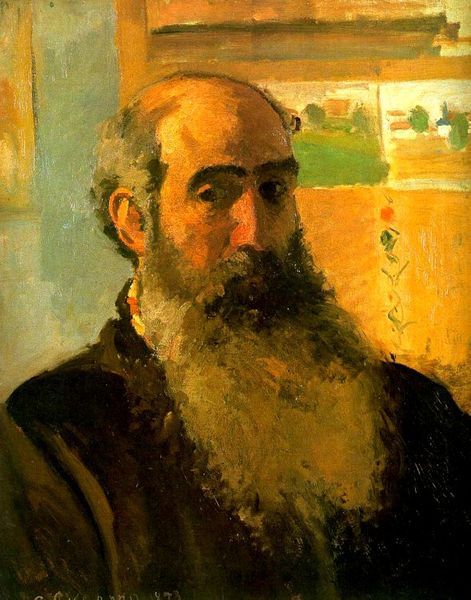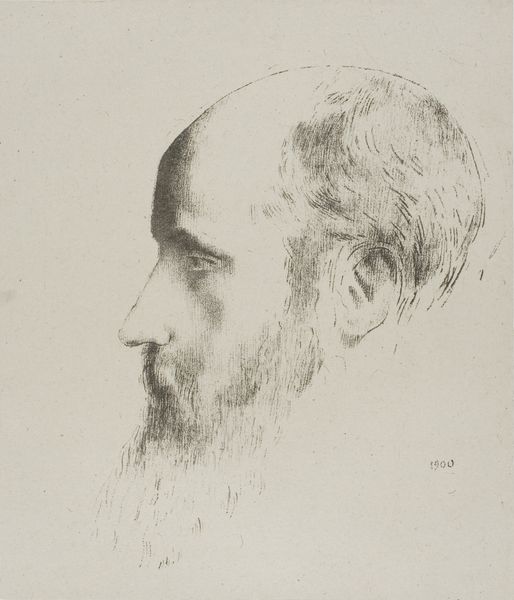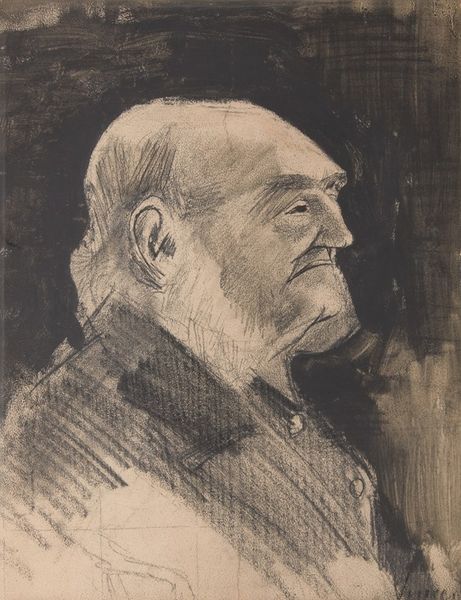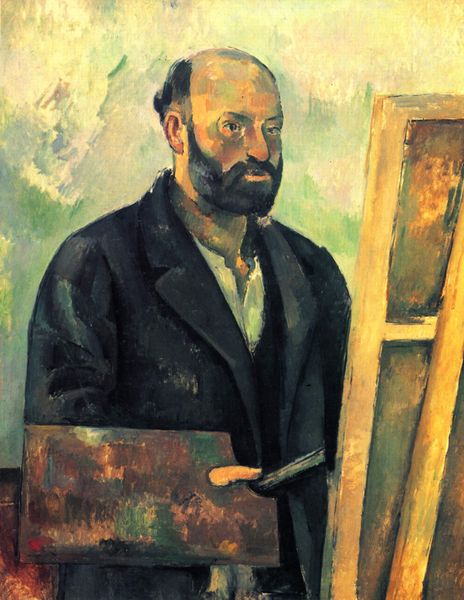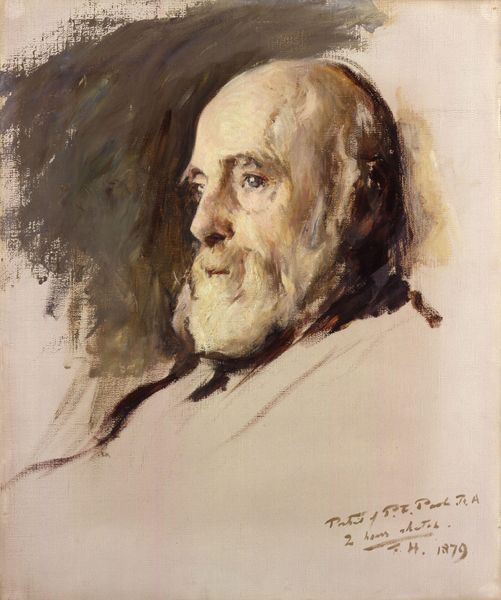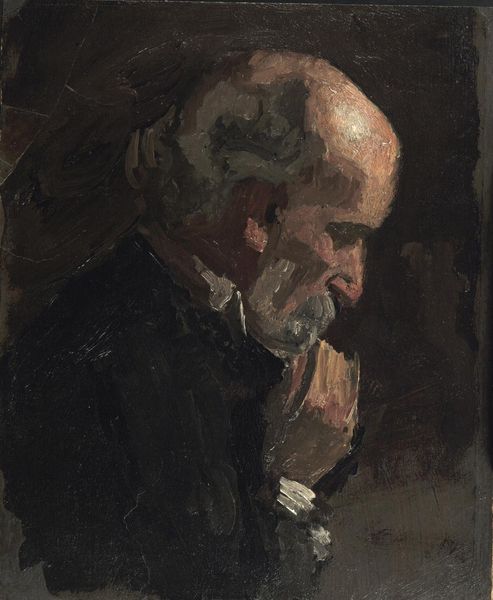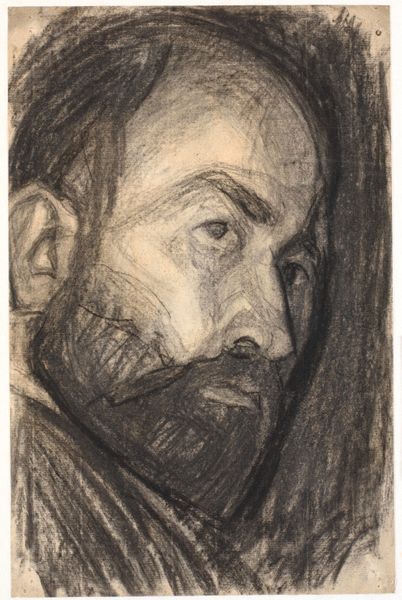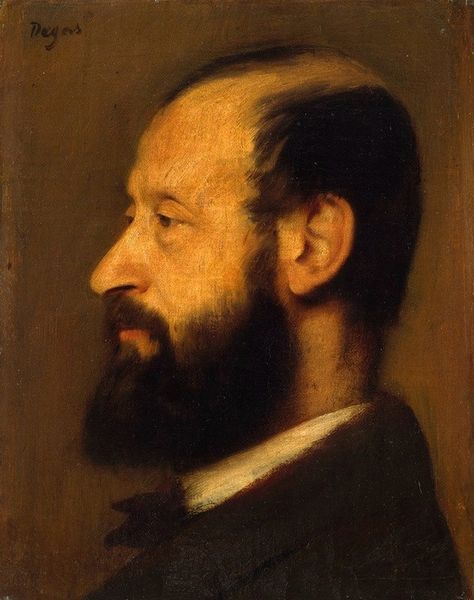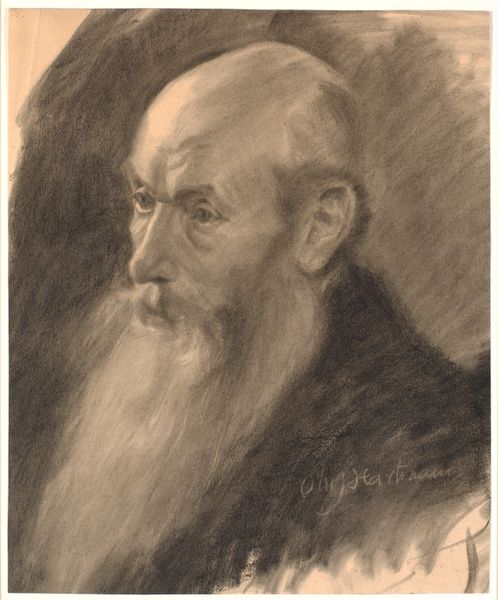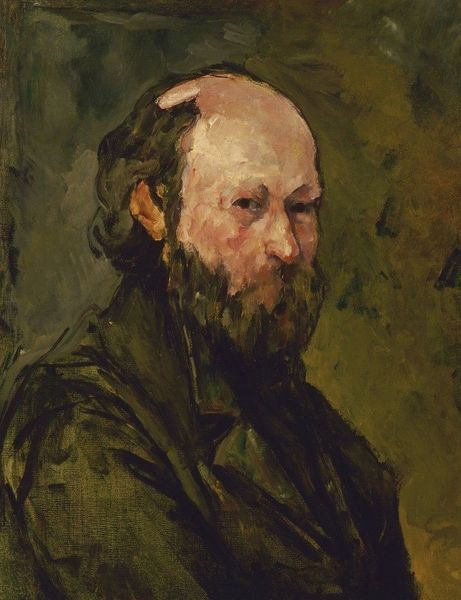
Copyright: Public domain
Editor: This is Antonio Carneiro's "Auto-Retrato," created in 1921, and crafted with watercolor and impasto. It has a slightly haunting feel to it. What compositional elements stand out to you? Curator: The striking contrast between the illuminated face and the dark, almost abstract background demands our attention. Consider how the brushstrokes, visible and textured, disrupt the traditional smoothness expected in portraiture. What semiotic readings can we draw from this interplay of light and shadow? Editor: It feels like the light is highlighting the passage of time on his face. Curator: Precisely. The chiaroscuro effect serves to sculpt the face, accentuating its planes and contours. Notice also the asymmetry; one eye is more deeply shadowed, contributing to a sense of psychological depth. How might this imbalance inform our understanding of self-representation? Editor: I guess it isn’t about perfection, but about showing something real. And it does feel very intimate, in terms of his gaze. Curator: Indeed. The application of impasto lends a tactile quality to the surface. The texture invites the viewer to engage with the painting not just visually, but almost haptically, deepening the intimacy. How does the materiality contribute to your emotional response? Editor: The roughness adds to the emotional impact, the feeling isn't smoothed over. Curator: Exactly. Carneiro has manipulated the formal elements to generate a profound psychological presence. It’s not just a likeness; it's an embodiment of inner life through artistic means. Editor: That gives me a new way to think about portraiture! Curator: The artist's masterful use of these visual tools shapes our reading in meaningful ways. We are invited into his inner world, brushstroke by brushstroke.
Comments
No comments
Be the first to comment and join the conversation on the ultimate creative platform.
